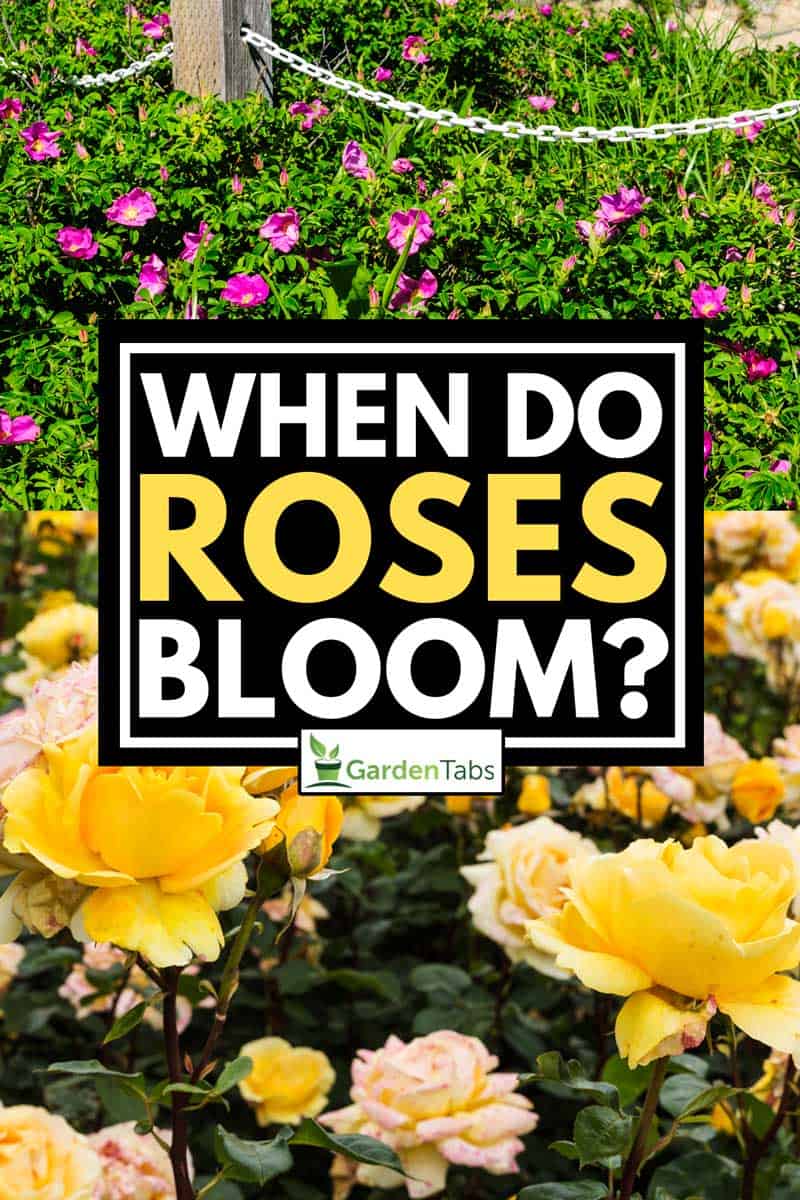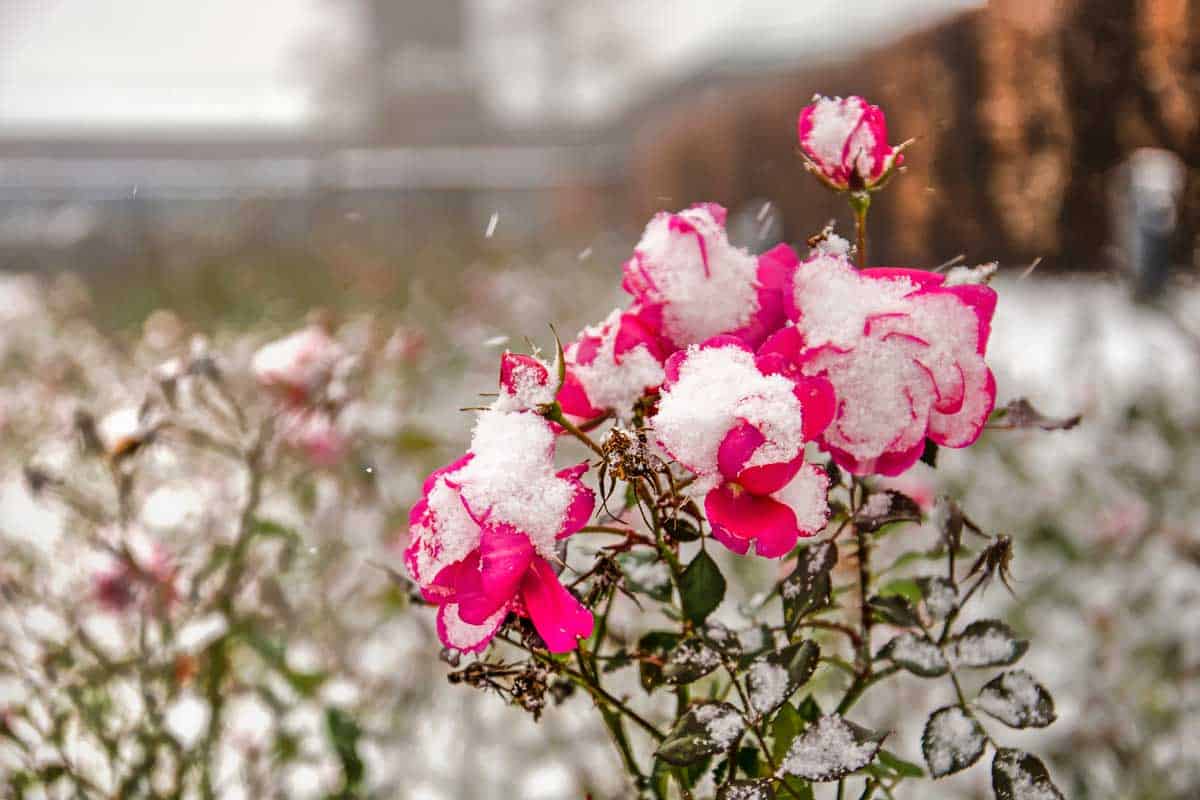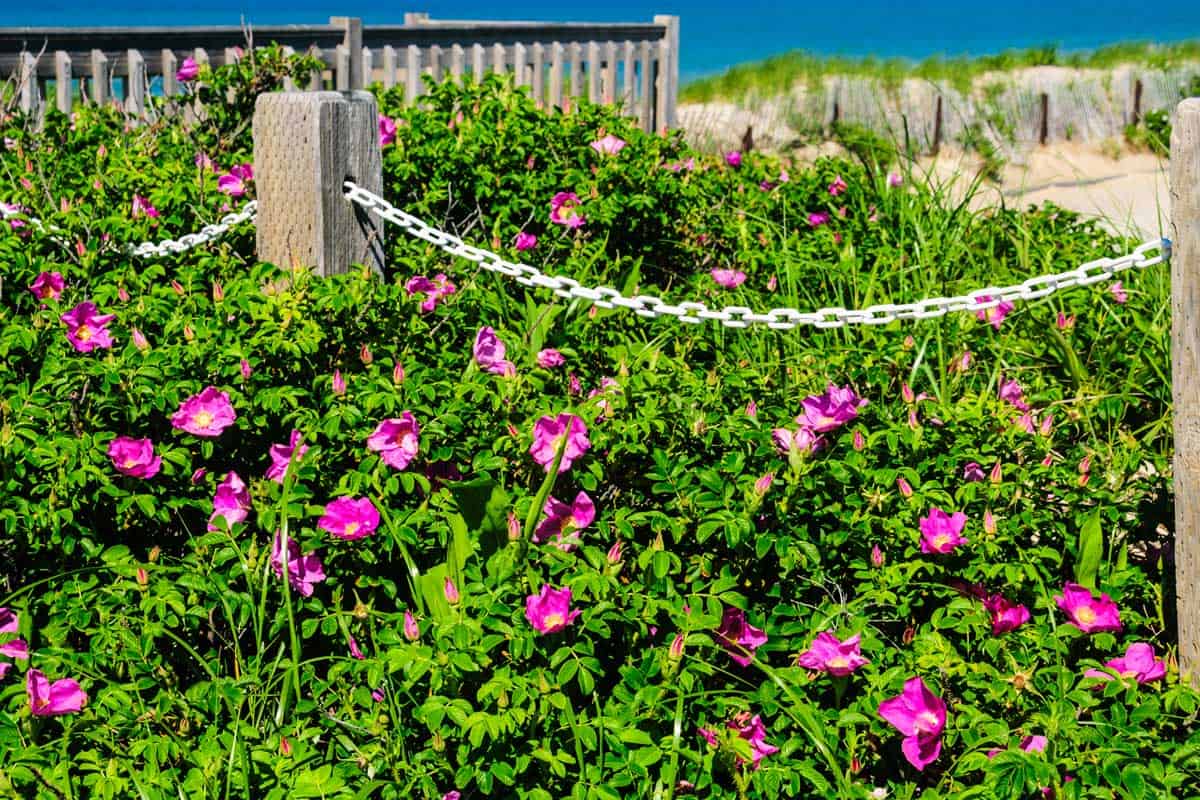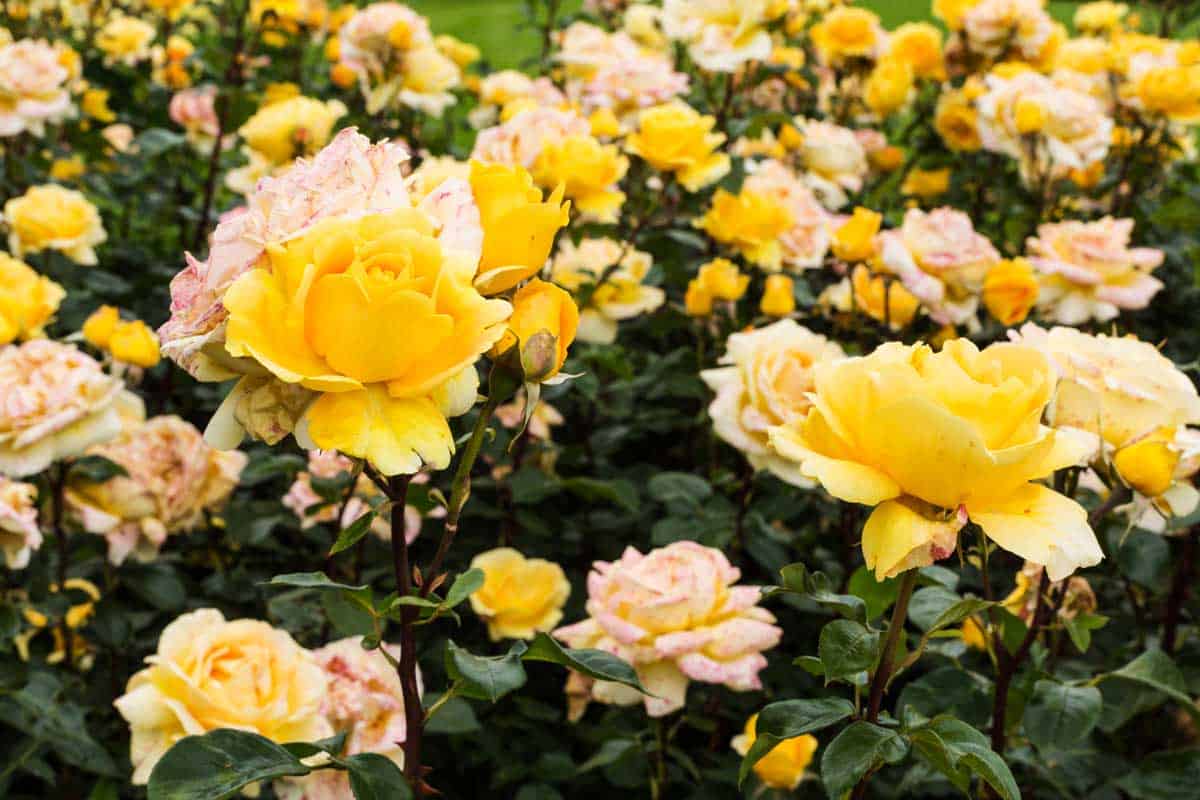 Roses have been around for thousands of years. These exquisite flowers are symbols of love and beauty. Gardens with roses in full bloom are enviable. But these prized flowers are fussy. Getting your roses to blossom is an accomplishment. So, when should you expect your roses to bloom? We have researched this important question to get you the answers you need.
Roses have been around for thousands of years. These exquisite flowers are symbols of love and beauty. Gardens with roses in full bloom are enviable. But these prized flowers are fussy. Getting your roses to blossom is an accomplishment. So, when should you expect your roses to bloom? We have researched this important question to get you the answers you need.
Most roses will bloom in spring, with some varieties booming again in the fall. Still, other varieties will bloom from spring through fall. These types of roses can bloom all year-round if they are grown in a climate with warm winters.
There are many factors to consider when growing healthy roses. Keep reading this post as we dig more in-depth on the topic of roses in bloom.
How Long Do Roses Stay In Bloom?
Roses can be repeat bloomers, meaning that they bloom once in summer and then again in the fall. Roses can also be continuous bloomers, blooming during spring, summer, and fall. For a large portion of the U.S., roses will go dormant in the fall.
Roses typically stay in bloom from spring to fall, but they take some time to grow. In spring, you should expect blooms six to eight weeks after you see some growth on your plant. Once your rose varietal produces a flower, it will continue the six-week cycle for regrowth. There will be different stages of growth, so you will continuously see flowers blossoming depending upon the type of rose you planted.
Where you live in the U.S. will have an impact on when your roses will bloom. For example, if you live in a warm southern place like Miami, your roses will bloom all year. If you live in a colder northern city like Portland, you might not see blooms until June.
Roses Grow In Most Plant Hardiness Zones
Most roses will grow in Zones 7, 8, 9, and 10. These zones are warm and ideal for roses to thrive. The species of rose and the amount of warmth and sunlight available are factors to consider for active growth. Roses can grow in cold climates, and some even need a winter chill to be at their best for flowering. The chilliest zone for roses to bloom is Zone 3, although there are varieties to consider in Zone 2.
Roses are not tough enough to endure Zone 1's harsh climate. If you live in this zone, your best bet is to plant a variety like a miniature rose in a container and keep it indoors in a sunny room. Roses need at least six hours of sunlight.
Roses to Grow in Zone 2

A Zone 2 winter can experience temperatures dropping to -35 degrees. The Parkland Series and Explorer Series roses were bred in Canada to survive these extreme temperatures. You can expect blooms to appear in June and continue through October. These plants require snow or some other covering, like mulch for protection during the winter months.
Roses to Grow in Zones 3, 4, 5 and 6

The class of Rugosa roses is one of the simplest to grow. The sprawling shrub is low maintenance and cold hardy. Popular types of Rugosa include Moje Hammarberg, Snow Pavement, and Topaz Jewel.
You can anticipate these roses to start blooming in late spring. Most of these plants are repeat bloomers but are at their best when they first blossom.
Roses to Grow in Zones 7, 8, and 9

Zones 7 through 9 is the sweet spot for successful rose gardens. Hybrid Tea is a class of rose that will flourish in these moderate environments.
Hybrid Tea plants are one of the most popular of roses. The nearly perfect flower is usually long-stemmed, showing off vibrant colors. Types of Hybrid Teas include Pink Peace, Granada, and Sheer Bliss. These roses are repeat bloomers, and you will see them flourish all summer.
Click here to find Pink Peace roses on Amazon.
Roses to Grow in Zones 10 and higher
Most roses will do well in Zone 10. The Climbing Rose class of plants is a good bet for Zones 10 and higher. Plants like Don Juan and Raspberry Cream Twirl have beautiful blooms that explode in the spring. They are repeat bloomers that you will enjoy well into the fall.
Click here to find Raspberry Cream Twirl roses on Amazon.
Click here to find the Don Juan rose on Amazon.
Gallica roses like Empress Josephine or James Mason are one of the oldest garden varieties. The short bushy shrubs need a winter chill to produce flowers. If you live in Zone 10 or higher, this rose is not for you.
A state's landmass can represent multiple plant hardiness zones. Determine your zone before you decide on which type of rose to plant. And, when purchasing plants, note your hardiness zone. If your rose type can be grown in Zone 4, it should do fine in Zones 5 through 10. Some roses cannot take the heat, though, so it's best to do your research.
How Do You Keep Roses Blooming Throughout The Season?
In most locations, roses will be in bloom during spring. The weather plays a significant factor in when your flowers flourish. Roses need generous amounts of warmth and sunlight to grow. Some varieties don't bloom until summer.
To keep your roses in bloom, choose a continuous blooming variety and plant it in an area that receives at least six hours of sunlight. And, if you live in a climate with chilly winters, make sure to prepare your plant for winter once it stops blooming in the fall.
Should You Deadhead Roses?
You should deadhead roses so that your plant can have more energy to start the next growth cycle. Cutting off "spent" blossoms will help your roses bloom. Once your roses cease blooming, cut off the dead flowers. Make sure you use sharp garden shears for a clean cut. Check out our post "Best Long-Handled Garden Shears" or "Best Garden Edging Shears" for excellent tips and advice on which pruning tool you should consider.
If you're preparing your plants for winter, stop deadheading by October so your plant can form hips.
Roses In Bloom
Roses might be a gardener's most prized possession. These gorgeous flowers can be grown almost anywhere. There are thousands of hybrids and over 100 species for you to choose for your garden. The expansive selection of shapes and colors can create a stunning display.
With proper planning, you can plant roses that will bloom from spring to summer to fall. And, if you are lucky enough to avoid winter, you might have roses in bloom all year round.



